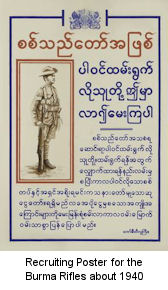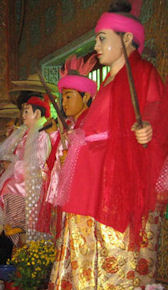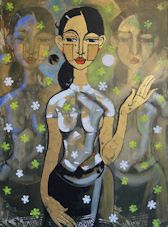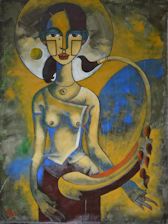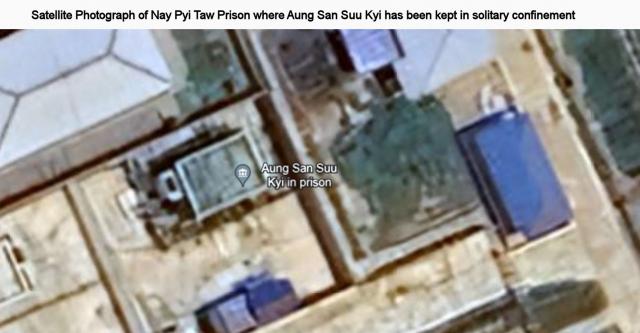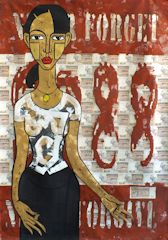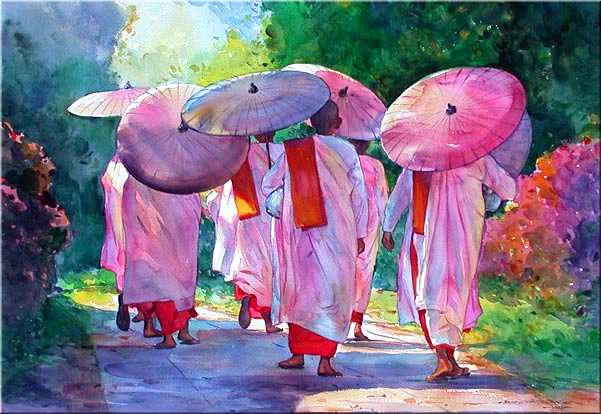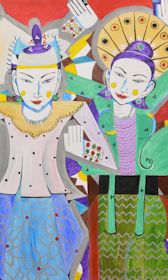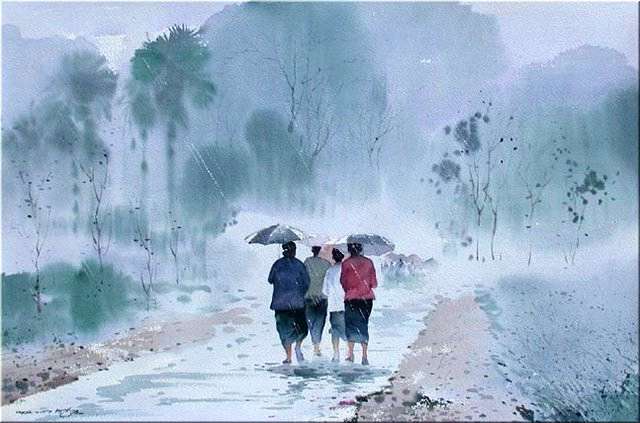The Labyrinth of the Rohinga Conundrum
Derek Tonkin PDF Version
There is indeed more than enough good reason for the Museum to organise a special exhibition on the matter. Yet as I have already shown, I am concerned that the special exhibition is being used as a propaganda platform to disseminate a particular historical narrative of the kaleidoscope of Muslim communities, Indian and Indo-Burman, who have in recent years coalesced into the “Rohingya” community, an ethnicity in the making. Most Myanmar citizens, I believe, would find the exhibition controversial. It will not help to promote reconciliation between the Buddhist and Muslim communities in Rakhine State. Its implicit portrayal of Daw Aung San Suu Kyi as somehow complicit in genocide is unfortunate and widely disputed, however naïve and ill-informed she may well have been
Derek Tonkin - 29 March 2022 PDF Version
In his determination of genocide by the Myanmar Armed Forces delivered in the US Holocaust Memorial Museum on 21 March 2022, US Secretary of State Anthony J Blinken drew significantly on materials in the special exhibition “Burma’s Path to Genocide” set up in 2021. In a series of tweets between 20 and 26 March 2022 I drew attention to what seemed to me to be inaccuracies and distortions in the Exhibition’s presentation. Indeed, of the five Chapters in the online presentation, many of the captions do not in my view reflect historical fact, and this is particularly true of Chapters 1 and 2.
The main problem is that the Exhibition reflects not an independent analysis of who the Rohingya are, their origins and identity, but an idealised, ideology-based narrative which ignores the reality that they are mainly descendants of British-era (1824-1948) agricultural migrants from the Chittagong Region of Bengal. Jacques Leider has presented a seminal paper on “Chittagonians in Colonial Arakan”.

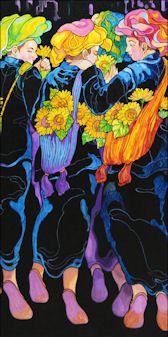
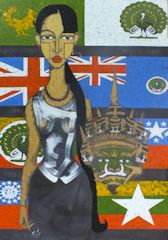
Genocide Determination by US Secretary of State Blinken
Derek Tonkin - 24 March 2022 PDF Version
On 21 March 2022 US Secretary of State Anthony J Blinken issued a formal determination that the Myanmar Armed Forces, known as the Tatmadaw, were responsible for genocide against the Rohingya minority population in Rakhine State. The determination is a political statement and has no international legal authority. The evidence adduced in the determination (unless a fuller formal statement is intended) is open to discussion. Its timing may well have been influenced by the Russian invasion of Ukraine and allegations of genocide made in this context.
David Steinberg: Myanmar: Words like "genocide" have consequences PacNet #19 12 April 2022
Military Coup in Myanmar - 1 February 2021
Notifications and Announcements
GNLM: Notification No. 1 of the Commander in Chief - 1 February 2021
GNLM: Office of the President Order No 1 - 1 February 2021
GNLM: Meeting of the National Defence and Security Council - 1 Feb 2021
GNLM: Miscellaneous Appointments - 1 February 2021
Information for the People': Office of the C-in-C - 2 February 2021
MFA Statement and diplomatic briefing: GNLM - 6 February 2021
Announcement of the Union Election Commission - 7 July 2001
Announcement of the Union Election Commission - 8 July 2021
Announcement of the Union Election Commission - 26 July 2021
Order No. 152/2021 of the SAC - 1 August 2021
Commentary
Statement to the UK House of Commons
Minister of State Nigel Adams - 2 February 2021
Security Council unity 'crucial' to support democracy in Myanmar
UN News: "Consultations" among UNSC Members - 2 February 2021
Text of Remarks by the UNSG's Special Envoy Christine Burgener
UNSC VTC Consultations on Myanmar - 2 February 2021
Myanmar coup on the pretext of a constitutional fig leaf
Melissa Crouch: East Asia Forum - 3 February 2021
Message to the People of Myanmar
Cardinal Charles Maung Bo: Religions for Peace - 3 February 2021
The Coup in Myanmar: What do we know?
Andrew Selth: The Interpreter, Lowy Institute - 3 February 2021
Aung San Suu Kyi is flawed but needs our Support
Baron Darzi of Denham: The Times - 4 February 2021
Press Statement on the Situation in Myanmar by Security Council President
UN Press Centre - 4 February 2021
Myanmar needs a new kind of democracy
Thant Myint-U: New York Times - 5 February 2021
China does not like the coup in Myanmar
Enze Han: East Asia Forum - 6 February 2021
Myanmar's coup: Reversion to Type
The Economist: Briefing - 6 Feburary 2021
Ghosts of coups past in Myanmar
Mary Callahan: East Asia Forum - 7 February 2021
Post legalism and Myanmar’s contradictory coup
Nick Cheesman: ABC Religion and Ethics – 9 February 2021
Myanmar, still escaping the shackles of the past
Alan Doss: Passblue - 9 February 2021
Measure of the man who stole Myanmar's democracy
David Scott Mathieson: Asia Times - 10 February 2021
Behind the coup: what prompted Tatmadaw's grab for power?
Hunter Marston: New Mandala - 12 February 2021
Myanmar's youth holds the country's future in their hands
Thant Myinyt-U: Financial Times - 12 February 2021
International Crisis Group: Briefing No 166 - 16 February 2021
China addresses rumours, urges Myanmar to settle political differences
Ambassador Chen Hai: Myanmar Times - 16 February 2021
Statement by Concerned Businesses in Myanmar
Myanmar Centre for Responsible Business - 19 February 201
Statement by the President of the Security Council (US) on Myanmar
US Mission to the UN: 10 March 2021
Debate in the UK House of Lords on Protests in Myanmar
Hansard House of Lords: 10 March 2021
Thant Myint-U: London Review of Books Blog - 18 March 2021
Kavi Chongkittavorn: The Irrawaddy - 31 March 2021
Statement by the President of the Security Council (Vietnam) on Myanmar
Vietnamese Mission to the UN: 31 March 2021
Can Myanmar's Democracy be rescued?
Interview with Derek Mitchell: Bloomberg - 18 April 2021
Vijay Nambiar: PassBlue - 19 April 2021
Myanmar and the Lessons of History
Andrew Selth: Asia Link - 23 April 2021
ASEAN Chairman's Statement and Five Point Censensus
ASEAN Website: 24 April 2021
Aung San Suu Kyi's uncertain fate
Andrew Selth: Asia Link - 13 May 2021
International Crisis Goup - 18 May 2021
Taking Aim at the Tatmadaw: The New Armed Resistance
International Crisis Group Briefing - 28 June 2021
Andrea Passeri: IKMAS (Malaysia) Working Paper - September 2021
Myanmar's Military Mindset: An Exploratory Survey
Andrew Selth Griffith Asia Institute - September 2021
The Deadly Stalemate in Post-Coup Myanmar
International Crisis Group - 20 October 2021
Committee Representing Pyidaungsu Hluttaw [CRPH] - NUG
Website of the Committee Representing Pyidaungsu Hluttaw
Online Burma Library - CRPH Documents
Online Burma Library - NUG Documents
Federal Democracy Charter- Parts I and II - 2021
Policy Position on the Rohingya in Rakhine State - 3 June 2021
Formation of the National Unity Government of Myanmar - 16 April 2021
Myanmar's NUG: Counteracting the coup: ISEAS - 28 January 2022
The International Community needs to prepare for a Post-Tatmadaw Myanmar: ISEAS - June 2022
Myanmar's Civil War and the Myth of Military Victory: Andrew Selth - 28 June 2022
HRC 53 NUG Policy Brief on the Rohingya and the human rights situation - 21 June 2023
NUG contribution to the HRC panel disussion - 22 June 2023
NUG Position on Relations with China - 1 January 2024
Myanmar’s Representation at the United Nations 2021
The Battle for Myanmar’s Seat at the UNGA
Catherine Renshaw: The Lowy Institute - 10 August 2021
Briefing Paper: Myanmar’s Representation in the United Nations
Special Advisory Council for Myanmar - 11 August 2021
Briefing Paper: Recognition of Government
Special Advisory Council for Myanmar - 23 August 2021
Briefing Paper: The Responsibility to Protect (R2P) in Myanmar
Special Advisory Council for Myanmar - 1 September 2021
Briefing Paper: The Response of UN Political Bodies to the Coup
Special Advisory Council for Myanmar - 9 September 2021
Legal Opinion: The Representation of Myanmar at the UN
Myanmar Accountability Project - 14 September 2021
Report of the UNGA Credentials Committee
A/76/550 - 1 December 2021
adopted by consensus - 6 December 2021
Interview with Ambassador Kyaw Moe Tun
VOA News - 12 December 2022
RFA - 14 December 2022
Report of the UNGA Credentials Committee
A/77/600 - 12 December 2022
adopted by consensus - 16 December 2022
UN Press Office - 16 December 2022
Report of the UNGA Credentials Committee
A/78/605 - 6 December 2023
Resolution 78/-- of the UNGA [nya]
adopted by consensus - 18 December 2023
UN General Assembly approves Report of Credential Committee A/78/605
UN Press Office - 18 December 2023
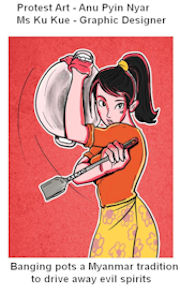
In Defence of Aung San Suu Kyi - 22 February 2024
Why Daw Suu could not "speak out" on the Rohingya crisis - Lowy "Interpreter".
Thread of 12 Tweets posted - 22 February 2024
Addressed to the City Councils who awarded and then revoked "Freedom of the City".
Daw Suu pursued her fight for democracy against the Military even at the ICC.
* * * * * * * * * * * * * *
Notes on the decision by the Brighton and Hove City Council to revoke the “Freedom of the City” award made to Daw Aung San Suu Kyi in 2011
Derek Tonkin writes: On 19 October 2023 the Brighton and Hove City Council revoked the Freedom of the City awarded to Daw Aung Suu Kyi in 2011. Their decision was based on allegations that Daw Aung San Suu Kyi had acquiesced in, if not supported, the ethnic cleansing and genocide of the Rohingya Muslim population in Rakhine State. In this memorandum I analyse the in-house briefing prepared for the Council and show how it was seriously flawed. I examine what Daw Aung San Suu Kyi actually said and did in the context of the Rohingya crisis. Few if any Council members or officials are likely to have more than a superficial knowledge of the Myanmar reality, of Daw Aung San Suu Kyi’s precarious situation in Myanmar politics and of her lack of any influence at all over the Myanmar. military who were totally independent of the civilian administration in their operations.
It has yet to dawn on the Council that the only people to have benefitted from this sorry saga are the military junta themselves. For if a British institution like the Council, claiming the moral high ground yet exhibiting misguided, self-righteous delusion, can indulge in ruthless criticism of Daw Aung San Suu Kyi on the basis of biased and fabricated misinformation, then so too can the military junta. It is to be hoped that the Council, on reflection, will realise the extent of the injustice which they have done to this ailing, aged and arbitrarily detained political prisoner. This has not been their finest hour.
It is remarkable, indeed unprecedented, that a UK Government body, in this case the Brighton and Hove City Council, should sanction a political prisoner, an elderly lady of 78 years of age, whose younger son, Kim Aris, told Richard Lloyd Parry in an interview in the 'The Times Magazine' of 4 November 2023 that he fears he will never see his mother again. Daw Aung San Suu Kyi has been detained virtually incommunicado for over 30 months in a cell house 5m x 8m (see satellite photo below) in a central Myanmar jail by a despotic military regime condemned for its human rights abuses. The Australian academic and economist Sean Turnell, who was a prisoner in the same jail for 650 days, has promised to give a graphic description of her living conditions in his book “An Unlikely Prisoner” to be released shortly. Her immediate and unconditional release has been demanded by the UN General Assembly in their Resolution of 14 June 2021 (Paragraph 2).
The action taken by the Council is callous and indefensible, for several Councillors were informed of Daw Aung San Suu Kyi’s predicament by email on 17 October 2023, two days before the Special Council meeting on 19 October 2023.
Myanmar Coup Two Years on: Neighbours' Pragmatism
Economist Intelligence - EIU 4 May 2023
- EIU does not expect outside actors to meaningfully alter the course of conflicts in Myanmar, given limited political and economic leverage over junta leaders and armed resistance, and the lack of a unified approach.
- Pragmatism underpins Myanmar's neighbours' approach to the country. China, Thailand and India will not rescind tacit support for the junta given practical concerns closer to home, such as border security and natural resources trade.
- Indonesia, the 2023 rotational chair of the Association of South‑East Asian Nations (ASEAN), has steered the bloc towards promoting dialogue. However, ASEAN's capacity to mediate conflicts is ultimately constrained by its institutional structure.
Violence and Belonging: Conflict, War and Insecurity in Arakan 1942-1952
SEATIDE : CRISEA : Silkworm Books - March 2023
Jacques Leider writes: "The decade from 1942 to 1952 was a period of abrupt political and social change in Burma’s province of Arakan. Power and political agency shifted and were redistributed in a context of warfare, transition from colonization to independence, and struggles for autonomy. Devastation, bloodshed, and rampant poverty were features of this troubled period where regionally dominant Buddhist and Muslim populations went through a process of increased self-awareness and a reshaping of ethnohistorical identification. The present chapter, a contribution to this volume on identity formation in Southeast Asia, looks at the interaction of multiple forms of violence with the consolidation of belonging. Violence and belonging were underpinned by the politics of community formation which persisted and hardened during the following decades, engendering new intercommunal strife."
A Critique of the Allegations of Electoral Fraud made by the UEC
Derek Tonkin writes: The Union Election Commission in Myanmar has presented no evidence of alleged election fraud which they say was committed at the 8 November 2020 elections. There is a world of difference between anomalies in the voter lists and the alleged criminal exploitation of these anomalies by over 40% of those who actually voted. The allegations defy common sense and are an insult to the Myanmar people.
Notes on progress towards Self-Government and Independence 1945-47
Derek Tonkin writes: The Notes examine appointments made to the Executive Councils formed on (a) 3 November 1945 by Governor Sir Reginald Dorman-Smith, and on (b) 28 September 1946 and (c) 20 July 1947 by Governor Sir Hubert Rance, as well as the latter's appointments to the Council of Ministers on (d) 1 August 1947. The Notes draw mainly on Professor Hugh Tinker's two-volume "Burma: The Struggle for Independence 1944-1948", reports in "The Times" of London and debates in the UK House of Commons.**
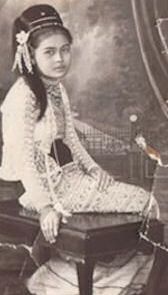
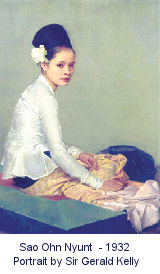
:
